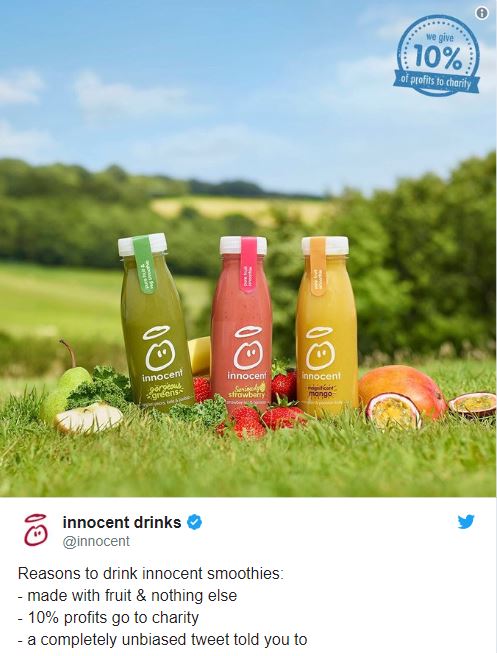So you’ve put out countless posts about your brand’s new campaign, but no one seems to be taking the bait. Sure, the social post has a lot of impressions … but why isn’t anyone ‘liking’ it? Or even sharing it?
Writing a social media post that your audience will actually
want to engage with takes a whole lot more than creativity — you need to know the ins and outs of how factors such as call-to-actions, hashtags and language work in order to get people clicking!
Here are five rules to follow when creating engaging social media posts:
Rule #1: Know your hashtags
First things first, you have to know
where to include hashtags and
when to include them. Many brands fall into the trap of including too many, and irrelevant, hashtags because they think the post will reach more people.
More hashtags ≠ more reach.
Less is more when it comes to including hashtags in your posts, and the key is to only # relevant keywords — be careful not to post the same or similar keywords twice (#PR is the same as #PublicRelations).
media update top tip: You can search for keywords on various social media platforms in order to see how relevant they are (when they were last used, how often they're used, who uses them, etc.).
For example, if you’re marketing a campaign for a new brand of coffee, you would include company tags and relevant hashtags as shown below:
‘Check out our new #marketing #campaign for @CaramCoffee!’ Note: You would only include a new (unheard of) hashtag if you were promoting a new product or if you would like audiences to use the hashtag when referring to your campaign. Take the coffee brand example:
‘@CaramCoffee keeps your sweet tooth #CaramelFresh.’This hashtag is something you would use EVERYWHERE throughout your marketing campaign, including on the site, in any ads, social posts, etc.
 Image courtesy of Jokideo
Image courtesy of Jokideo
Rule #2: Experiment with visuals and emojis 


The next things you need to consider using in your brand’s social media posts are visuals and emojis. Let’s take a look at what these two things can offer your brand.
Visuals — including infographics, images, videos, etc. — are a great way to attract attention and also enhance the meaning of your posts (did you know that people are
65% more likely to retain the information from a post if it’s accompanied by a relevant image?).
Consider this: If you’re promoting the previously mentioned Caram Coffee and you would like to discuss the new TVC for the brand, it would be a bit silly to exclude a screenshot or video from the social post, don’t you think?
You could even take it a step further and include a quote image from the campaign that stands out. Maybe you have a statistic in the video that you would
really like viewers to see. For example, as this imaginary coffee brand is caramel flavoured, you might include a stat along the lines of:
Emojis also add a tone to your posts that can otherwise be undecipherable or even confusing — especially if your brand uses satire or sarcasm. Additionally, they add a sense of ‘fun’ to your posts, which makes your brand seem more ‘human’ or personalised, and therefore, more engaging.
 (Image courtesy of Social Media Examiner)
(Image courtesy of Social Media Examiner)
Now back at the image. Sadly, we aren’t him.
Rule #3: Be informative, don't oversell
No one likes a pushy salesperson, so why would they like a pushy brand? You want to get your brand’s message across on social media in a way that
informs and promotes, without overselling.
Try to avoid a phrase like:
'[Brand name] will make your marketing strategy more effective with this new tool.'This example is ineffective as it does not provide the consumer with any information on how or why your brand will do what it says. What kind of tool? Why should marketers use this tool and how will it make their strategies more effective? Where would they include this strategy?
The post should answer these questions, as it is trying to effectively promote a product.
media update top tip: Your posts should always inform your target audience in a way that answers the question: Why should I care about this product/service? The post should provide a clear benefit of whatever product you are trying to promote without just merely describing why the product is great.
Take some pointers from the example below:
 Image courtesy of Express Writers
Image courtesy of Express Writers
The brand is selling the idea of the fruit juice with
informative information as well as a touch of
humour at the end, which playfully mocks the idea of overselling while ironically telling consumers what juice to buy. Humour also makes the post seem conversational as opposed to overly promotional.
Remember, there is no shame in being a bit ‘cheeky’ in your posts, provided your brand allows for it (and it forms part of your brand’s voice)
and you don’t offend anyone.
 Image courtesy of Bad Dog Needs Rotten Home
Image courtesy of Bad Dog Needs Rotten Home
RULE #4: Have a clear call-to-action
Now we’re not saying you need a giant red arrow with ‘click here’. A call-to-action can include many things — from polls to social media competitions, which could entice users to ‘enter to win’ by directly engaging and sharing your posts.
You could also have a call-to-action that directly asks users to engage with your post by asking them for their opinions (What do you think? Leave us a comment).
You could take it even further by asking users what they like and dislike about your brand. For example, if you’re wanting to try something new, like if you’re about to design a new website for your brand, you could give them an inside look and ask them what colours they would prefer in a ‘this or that’ type of sequence.
Additionally, you can add traditional call-to-actions by including ‘read more’ or ‘learn more’ at the end of your posts.
 Image courtesy of thedigitalhyve
Image courtesy of thedigitalhyve
Rule #5: Be concise and consistent (without being boring)
The rule for being concise is to keep your posts short, sweet and to the point. Sound difficult? It’s not — especially if you stick to the general character suggestions for each social media platform.
In case you need a reminder,
general guidelines for 2019 post lengths are as follows:
- Facebook — Between 70 and 140 characters
- Twitter — Between 80 and 100 characters
- LinkedIn — Up to 140 characters
- Instagram — Under 125 characters
In terms of being consistent, always remember to post at the same times, on the same days.
According to Forbes, there are
no definite rules for how often you should post on particular social media platforms, but the site does provide a
guideline for brands regarding how frequently they should be posting:
- Facebook — Two posts per day (if you have more than 10 000 followers)
- Twitter — One to five times per day (for optimal engagement)
- Instagram — A set number that works for your brand (even if that number is 10 to 20 posts per day), provided it's consistent
Find out which times/days work best for your brand and set up a
social media style guide in order to keep your brand’s voice consistent throughout your posts.
 Image courtesy of Bad Dog Needs Rotten Home
Do you have any post writing tips of your own? We’d love to hear them! Share them with us in the comment section below.
Image courtesy of Bad Dog Needs Rotten Home
Do you have any post writing tips of your own? We’d love to hear them! Share them with us in the comment section below.Want to stay up to date with the latest news?
Subscribe to our newsletter.
Ever wonder why social media influencers are so popular? What’s more, where did they even come from? Find out in our article, Social influencers: What’s the deal?
*Image courtesy of Vecteezy